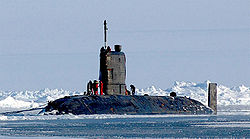Pre-First World War


This is a list of Royal Navy submarines, arranged chronologically. Submarines that are currently active and commissioned are shown below in bold.







From HMS Porpoise Royal Navy submarines were given their own "S" pennant numbers.


This section relies largely or entirely upon a single source .(January 2017) |
